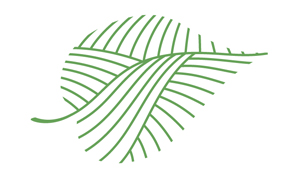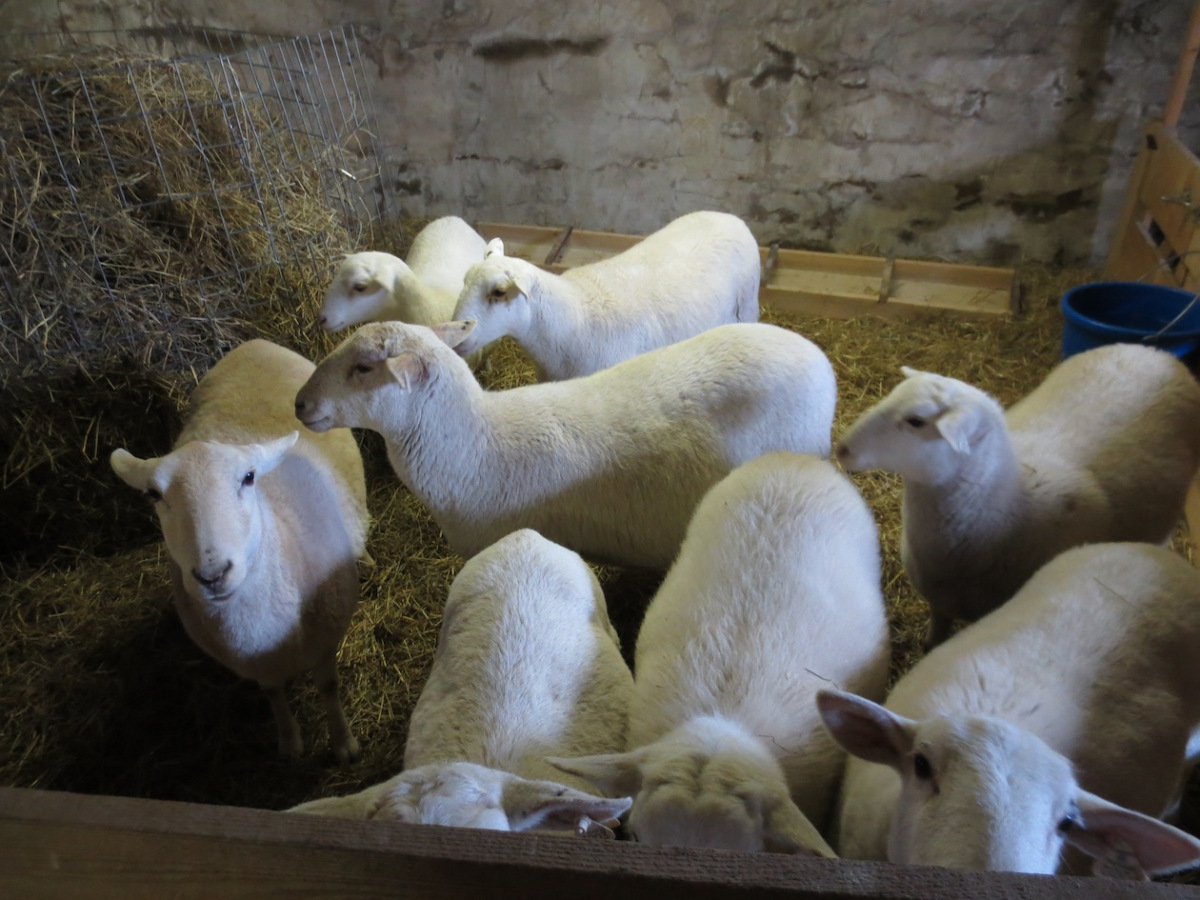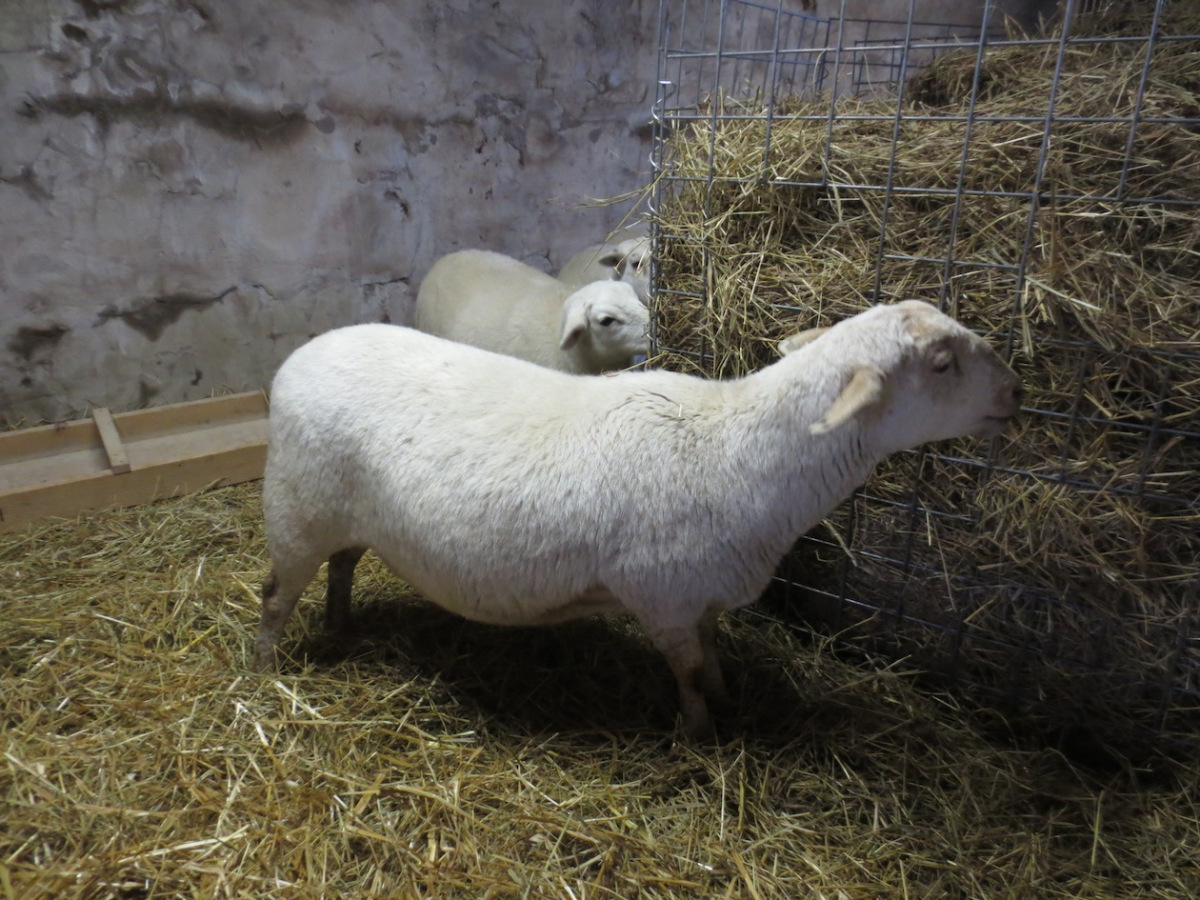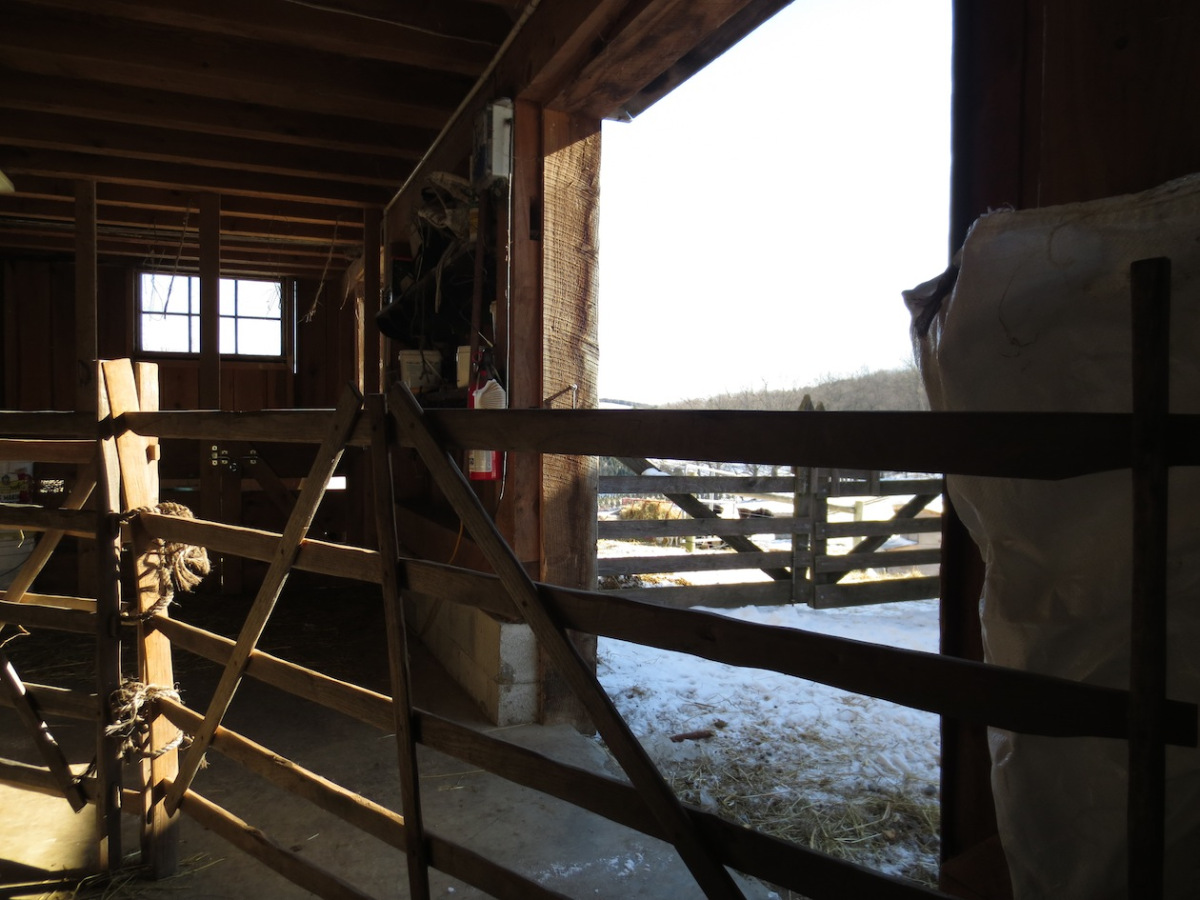Lilac Hill farm in late winter is all about food, water, shelter and waiting. Waiting for kids and lambs, waiting for nest making and eggs, and waiting for the first bits of green in the pastures. Already the days have lengthened and evening chores are not completed in the dark.
In spite a false alarm when I was away from the farm for 6 days, Gretel waited to kid until the week after my return.On Sunday the 24th Gretel kidded. Ernest (6#) and Cecily (8#) arrived without complications. Unfortunately Gretel's colostrum was too thick for them to nurse so we thinned the milked colustrum and bottle fed it to the Wilde kids (my daughters' name choices were inspired by Ocsar Wilde's "The Importance of Being Ernest") in front of a warming fire. The kids spent the first night in the house then were returned to the barn. All this intervention was guided by our friend, Mike, with years of goat experience and who just happened to come to dinner on Sunday. Gretel came from Mike's farm years ago.
Although we do not see the Wilde kids nurse, they do have milk in their bellies and are very active.
The Katahdin ewes have benefitted from a grain ration at the end of their pregnancies. At the end of January I noticed that the ewes, especialy the yearlings (also know as theaves or gimmers), were losing condition on a hay only diet.Because I needed to put the ram in with the ewes a month early last fall (Burgess' field companion died unexpectedly), the yearlings needed the added nutritional support as they continue to grow while pregnant. Daily, close contact, especially with delicious grain, has gentled the flock and even my shiest Katahdins tolerate closer handling. The older two ewes, Maude and Mab, are obviously getting ready to lamb. It is harder to judge the readiness of the theaves.










